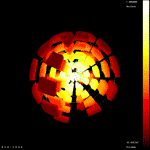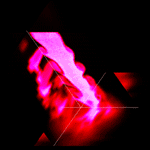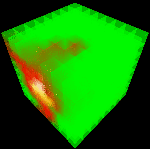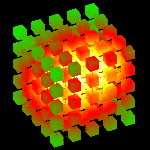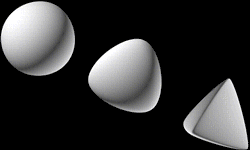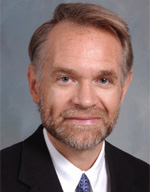
Bernd Hamann, Ph.D. (Dr. rer. nat.)
Professor
Dr. Bernd Hamann is a full professor in the Department of Computer Science at the University of California, Davis (UC Davis) [Department of Computer Science]. He was appointed by UC Davis in 1995. From 1991 until 1995, he was an assistant and associate professor in the Department of Computer Science and Engineering at Mississippi State University [Department of Computer Science and Engineering], where he was also associated with the NSF Engineering Research Center for Computational Field Simulation, now called High Performance Computing Collaboratory (HPC2) [High Performance Computing Collaboratory]. When he joined UC Davis in 1995, he kept adjunct professor status at Mississippi State University.
At UC Davis, Bernd Hamann has had affiliations with several graduate education and training programs, including the Graduate Group of Computer Science, Graduate Group of Applied Mathematics and Graduate Program in Health Informatics. He held a University of California Presidential Chair in Undergraduate Education, allowing him to develop research opportunities for undergraduate students focusing on visualization research driven by geological data analysis needs (2006-2010). As co-director and lead principal investigator on the U.S. side, he was co-leading the first Germany-U.S. International Research Training Group (IRTG), a Ph.D. student training effort funded by the German Research Foundation (DFG) for nearly ten years (2005-2014). This IRTG focused on the visualization of large unstructured data sets and involved the University of Kaiserslautern, Germany (overall German lead institution), University of California, Davis (U.S. lead institution), University of California, Irvine, Arizona State University and The University of Utah (U.S. partner institutions) [International Research Training Group]. Bernd Hamann was the UC Davis director of the Institute of Next-generation Visualization and Analysis (INGVA), a collaborative education and research training effort involving Los Alamos National Laboratory and UC Davis as partner institutions (2012-2017). The Institute allowed UC Davis Ph.D. students to work with and be co-mentored by staff scientists from Los Alamos National Laboratory and faculty members from UC Davis. Bernd Hamann has served as advisor/co-advisor, mentor/co-mentor or supervisor for a diverse group of doctoral students and post-doctoral researchers [Doctoral Students and Post-doctoral Researchers].
From 1997 to 2004, Bernd Hamann served as co-director of the UC Davis Center for Image Processing and Integrated Computing (CIPIC), later called Institute for Data Analysis and Visualization (IDAV). He has been an affiliated faculty member of IDAV and an affiliated lead scientist of the W.M. Keck Foundation Center for Active Visualization in the Earth Sciences (KeckCAVES) [W.M. Keck Foundation Center for Active Visualization in the Earth Sciences]. He has long-standing collaborative relationships with several research groups at U.S. national laboratories, including groups from the Center for Applied Scientific Computing (CASC) at Lawrence Livermore National Laboratory [Center for Applied Scientific Computing] and the Computational Research Division (CRD) at Lawrence Berkeley National Laboratory [Computational Research Division]. At these two national laboratories he has held the positions of Participating Guest Researcher and Faculty Computer Scientist, respectively. In addition, he was a UC Davis key participating investigator and original co-leader of the Human-centered Computing thrust of the UC Berkeley-led Center for Information Technology Research in the Interest of Society (CITRIS) [Center for Information Technology Research in the Interest of Society].
Bernd Hamann served as Associate Vice Chancellor for Research (Interdisciplinary Research and Strategic Initiatives) at UC Davis from 2003 until 2012, with the following main areas of responsibility: (1) providing leadership for campus-wide interdisciplinary research efforts; (2) overseeing research units reporting to the Office of Research; (3) handling appointments and performance evaluations of Academic Senate/Federation members and professional research staff with appointments in research units reporting to the Office of Research; (4) advising and working with faculty interested in pursuing proposals for research units/programs or other faculty-initiated large research efforts; and (5) coordinating, jointly with the Vice Chancellor for Research and the Associate Deans for Research, the review of complex pre-proposals for Limited Submissions programs, i.e., programs where a university can submit only a limited number of proposals. (In fiscal year 2010/11, considering all sources, the total amount of funds available to all research units reporting to the Office of Research was approximately $125M, and these units' combined expenditure amount was approximately $120M. Since 2008/09, UC Davis has received consistently over $600M extramural funding per year.) [Office of Research]
Jointly with David F. Wiley, Bernd Hamann co-founded Stratovan Corporation in 2005. Stratovan focuses on the development of computer software for image processing, data analysis, data visualization and geometric modeling [Stratovan Corporation] [Stratovan Corporation on Facebook] [Stratovan Corporation on X/Twitter].
Bernd Hamann's main research and teaching interests are visualization, geometric modeling (computer-aided geometric design), computer graphics, and immersive visualization environments. Visualization is concerned with the development of techniques that transform data into meaningful computer-generated images. Applications of visualization technology include the analysis of data generated in computational fluid dynamics (CFD), computational and molecular biology, medical/biomedical imaging, or physics and hydrodynamics simulation. Geometric modeling is primarily addressing the representation and manipulation of curves and surfaces, with major applications in automotive, aircraft and general product design. Computer graphics focuses on methods needed for producing realistic computer-generated images of three-dimensional objects and dynamic scenes, with applications in the computer animation and computer games industry. Immersive visualization is an emerging and increasingly important technology that allows engineers and scientists to interact with massive data sets in three-dimensional visualization environments. This technology supports stereoscopic rendering for virtual design and data analysis applications. Geometric methods for design, modeling and visual data analysis applications are Bernd Hamann's core research interests.
He is the author, co-author, or co-editor of over 500 publications [Publications]. Several of these publications have had broad scientific impact [Citations]. He has given invited presentations at premier conferences, universities and research laboratories worldwide, He was a member of the editorial board of the IEEE Transactions on Visualization and Computer Graphics from 1999 until 2003, and served as a papers co-chair and proceedings co-editor for the IEEE Visualization conferences in 1999 and 2000. In addition, he has served as a co-editor of books focusing on both basic visualization science and the application of state-of-the-art visualization methods in various application areas, including books published by Springer-Verlag in its Mathematics and Visualization book series [Mathematics and Visualization].
Bernd Hamann received a 1992 Research Initiation Award by Mississippi State University, a 1992 Research Initiation Award by the National Science Foundation, and a 1996 CAREER Award by the National Science Foundation. In 1995, he was awarded a Hearin-Hess Distinguished Professorship in Engineering by the College of Engineering, Mississippi State University. He was offered an endowed Tier-1 Canadian Research Chair (CRC) in 2001 and an endowed LexisNexis/Ohio Eminent Scholar professorship in 2005.
The University of Nevada, Las Vegas, extended an offer for the position of Vice President for Research and Dean of the Graduate College to Bernd Hamann in 2007. In 2010, Bernd Hamann was a finalist for the position of Rector of the University of Leipzig, Germany.
Bernd Hamann received a B.S. in computer science, a B.S. in mathematics, and an M.S. (diplom) in computer science from the Technical University of Braunschweig, Germany. He received his Ph.D. in computer science from Arizona State University in 1991.
--------------------------------------------------------------------------------------------------------------------------------
--------------------------------------------------------------------------------------------------------------------------------
--------------------------------------------------------------------------------------------------------------------------------
--------------------------------------------------------------------------------------------------------------------------------
Through the unknown, we'll find the new!
--------------------------------------------------------------------------------------------------------------------------------
So perfect and complete was my ignorance that it was impossible for me to know that I knew nothing.
--------------------------------------------------------------------------------------------------------------------------------
The truth may be stretched thin, but it never breaks, and it always surfaces above lies, as oil floats on water.
Se breve en tus razonamientos, que ninguno hay gustoso si es largo.
Be brief, for no discourse can please when too long.
--------------------------------------------------------------------------------------------------------------------------------
His speech was always consistent with moral virtue, and gladly would he learn, and gladly teach.
--------------------------------------------------------------------------------------------------------------------------------
You were not formed to live like brutes but to follow virtue and knowledge.
--------------------------------------------------------------------------------------------------------------------------------
Most of all, the mind must be withdrawn from external interests into itself. Let it have confidence in itself, rejoice in itself, let it admire its own things, let it retire as far as possible from the things of others and devote itself to itself, let it not feel losses, let it interpret kindly even adversities.
--------------------------------------------------------------------------------------------------------------------------------
(Τιποτα δεν ει′ναι αρκετο′ για τον α′ντρωπο στον οποι′ο τα αρκετα′ ει′ναι πολυ′ λι′γα.)
Nothing is enough for the man to whom enough is too little.
--------------------------------------------------------------------------------------------------------------------------------

